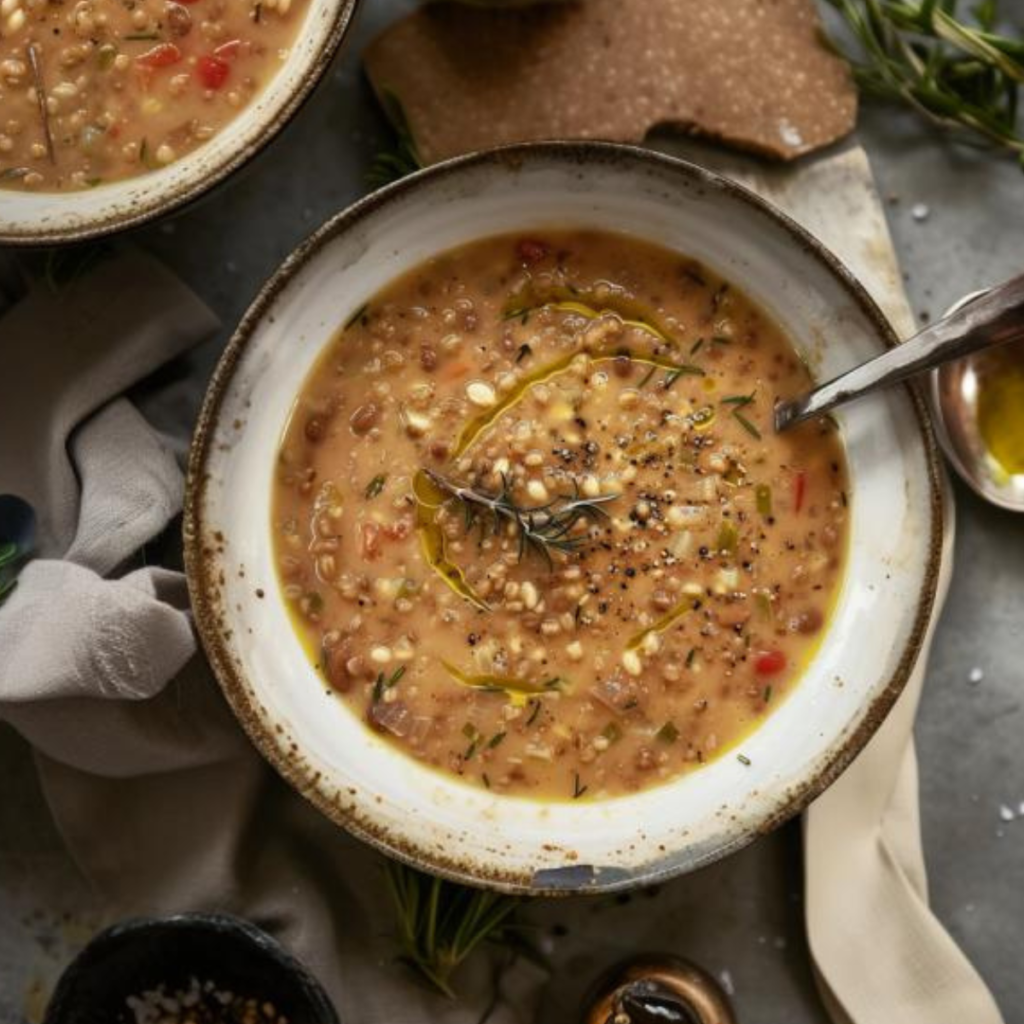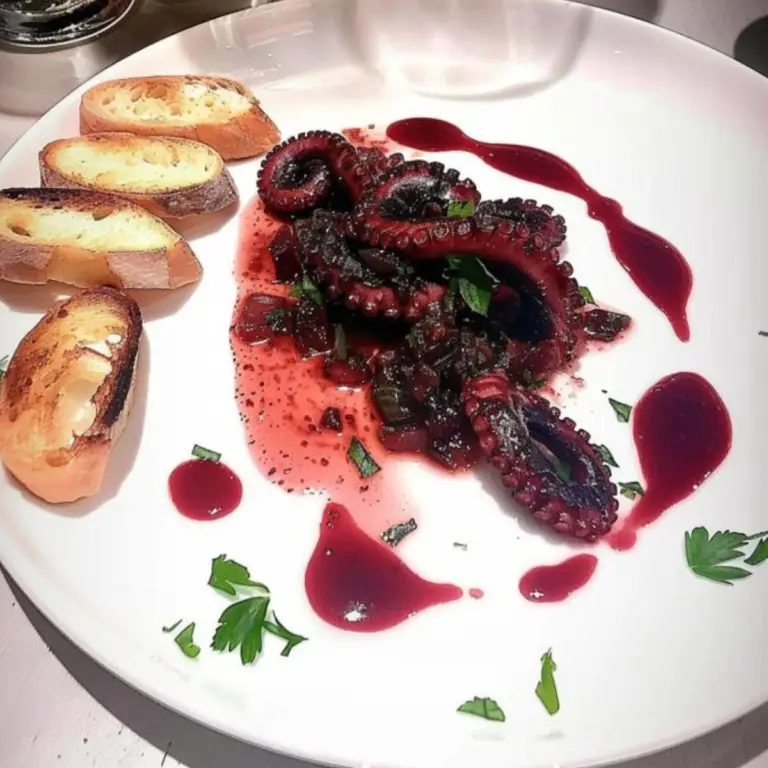Lucca-Style Farro Soup, also known as Garfagnana Soup or Garfagnina Soup, is that brothy dish with the taste of beans and farro that you deserve on every cold winter day, or simply when you need a warm dish with the intense scent of home and tradition. Here’s how they cook it in Lucca.

Lucca-Style Farro Soup
Equipment
- Knife
- Skillet
- Large pot
- Blender
Ingredients
- 1 cup dried borlotti beans or 2 cups fresh
- 1 cup farro
- 2/3 cup olive oil
- 1.75 oz lard
- 2 ripe tomatoes
- 1 stalk of celery
- 1 small onion
- 1 carrot
- 1 clove of garlic
- 1 sprig of sage
- 1 sprig of rosemary
- Salt to taste
- Pepper to taste
Instructions
- Prep Beans: If using fresh beans, boil in hot water for about an hour. For dried beans, soak for 12 hours, then boil for about three hours. Drain and reserve the cooking broth.1 cup dried borlotti beans
- Sauté Flavor Base: In a skillet, heat the olive oil and cook the lard, peeled and seeded tomatoes, chopped celery, onion, carrot, garlic, sage, and rosemary together for 30 minutes. Season with salt and pepper.2/3 cup olive oil, 1.75 oz lard, 2 ripe tomatoes, 1 stalk of celery, 1 small onion, 1 carrot, 1 clove of garlic, 1 sprig of sage, 1 sprig of rosemary, Salt, Pepper
- Blend Beans: Add the boiled beans to the skillet, mix, and then blend to a creamy consistency.
- Cook Farro: Rinse the farro under cold water thoroughly. In a large pot, cook the farro in the bean cooking broth over moderate heat for at least an hour.1 cup farro
- Combine and Serve: Mix the farro with the bean cream in the pot. Serve the soup in bowls, topped with freshly ground pepper and a drizzle of olive oil.
Notes
- Borlotti Beans: Fresh borlotti beans will cook faster than dried ones but remember to soak dried beans ahead of time. Cannellini beans or Great Northern beans are excellent alternatives, offering similar textures and flavors.
- Farro should be rinsed well to remove any impurities.
- Farro Alternative: Pearled barley is a suitable substitute, providing a similar texture and taste. Adjust cooking times as necessary.
- Lard Substitute: Use olive oil as a healthier option to achieve a comparable richness. Begin with a smaller quantity and adjust to taste.
- Quick Farro Cooking: Opt for pre-cooked or quick-cooking farro to reduce preparation time. Add it towards the end of cooking to prevent it from becoming overly soft.
- Herb Replacement: If fresh herbs aren’t available, dried herbs can be used instead. Use one-third the amount of dried herbs compared to fresh, adjusting for potency.
A Timeless Taste of Lucca: The Enduring Charm of Zuppa di Farro

Embracing the flavors and traditions of Lucca, my journey into the heart of Italian cuisine finds a beloved chapter in the Zuppa di Farro alla Lucchese. This dish, steeped in history, is a testament to Italy’s culinary ethos – transforming simple ingredients into a feast for the senses.

The combination of farro and beans, enriched with a symphony of vegetables and lard, embodies the rustic elegance and deep-rooted connection to the land that characterizes Tuscan cooking. Beyond its hearty warmth and nourishing soul, this soup serves as a bridge to the past, inviting us to savor a bite of medieval Italy with every spoonful.

For those eager to explore more culinary delights from Lucca, I recommend this page where Lucca’s traditional dishes await your discovery.






